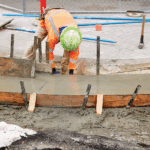I’ve Fallen in Love with the South Coast. You Should, Too
Imagine a community that offers coastal beauty, easy accessibility to major metropolitan areas, a relaxed lifestyle and a growing economy.
Imagine a community that offers coastal beauty, easy accessibility to major metropolitan areas, a relaxed lifestyle and a growing economy.

We all agree Massachusetts needs more housing. To get there, do we need a shinier, more tempting carrot, a bigger stick or something in between?
Palatable updates to building codes will unlock tens of thousands of new housing units by enabling more housing in the same volumes.
Homebuyers looking to pay their agents directly have found little success, according to a new consumer group study. That’s not what was supposed to happen.
The supposedly “earthshaking” legal settlement that was supposed to drive down real estate commissions wasn’t so tumultuous after all.
The requirement to compensate tenants displaced by a condo conversion creates a softer landing for households facing the challenges of an unexpected move.

America has become NIMBY Nation, and Massachusetts, where even plans for a two-bit apartment building will draw warnings of environmental doom, is its spiritual heartland.
Greater Boston’s economy is still struggling to regain its footing across many post-pandemic indicators but one success story is quietly driving the recovery: Massport.
What happens when the person buying your house dies before the closing date? Or when your tenant passes away mid-lease?
ADUs do hold some promise. But they can’t be built at the scale and affordability levels needed, nor in the right places, to be a load-bearing part of our strategy.
What makes for a good client relationship? At the heart is trust and likability. To get there, you need the right people, and you need to retain them.

The latest idea from a city pol to head off spending cuts: pile more taxes on the backs of apartment owners. But even a mayoral ally worries it’s a bad idea.

Instead of arguing over how many homes we’re building, we should measure success by how much we can bring down home-sale prices and rents.
If you think it costs a bundle to buy a house – what with a down payment and all – wait till you learn what it costs to sell one: more than $67,000, on average.
Massachusetts’ housing shortage and soaring rents are being exacerbated by the commonwealth’s extreme eviction-sealing law, by scaring away new housing.

The Massachusetts Appeals Court declined to hold an architect liable for advising its municipal clients to avoid working with a particular construction company.
Shaping a plan for 180 apartments on a Wellesley community college campus illustrates just how complicated carrying out the State Land for Homes program will be.

We took a nondescript midcentury office building and designed a new home for the Boston public school that had educated Samuel Adams and Paul Revere.

The Blessed Sacrament Church’s transformation from historic asset into vibrant housing community shows the promise and complexity of adaptive reuse.
In almost every case, the cause is due to at least one of five key factors and you have to understand them all to pinpoint problems.